CIVIDALE DEL FRIULI
The Altar of Ratchis
The dedicatory inscription running along the upper ledge of the work means that the altar can be considered a gift of King Ratchis (who reigned after Liutprand, from 744 to 749), commemorating his father Pemmon Duke of Cividale. It reads:
“Ratchis Hildeboholrit ensures the very great gifts
granted by Christ to the sublime Pemmon may shine,
so that temples in honour of God should be built everywhere,
and thus, among other things, he has adorned the house of the blessed John
with hanging jewels to enhance the beautiful Tegurium
and has enriched the altar with the colour of marble”.
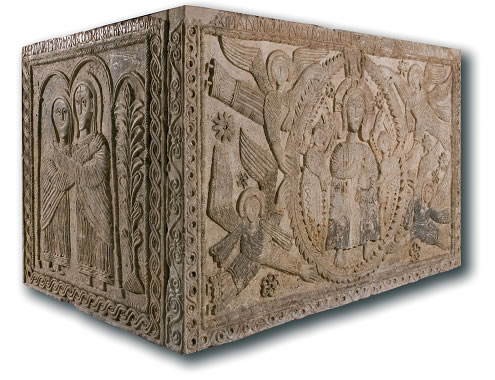
The Altar appears as an oblong composed of marble slabs placed side by side, four of which are sculpted with figures framed by decorative motifs. On the front of the Altar is a figure of Christ shown in the act of blessing, and inscribed in an almond shape, or mandorla, flanked by cherubim, and supported triumphantly by angels.
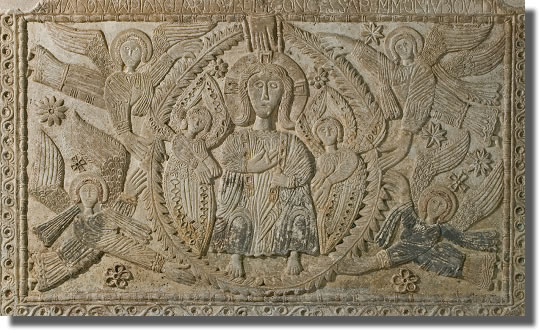
On the sides instead are shown scenes from the life of Christ, which relate respectively to the Visitation, to the Virgin and to Saint Elizabeth, and to the Adoration of the Three Kings.
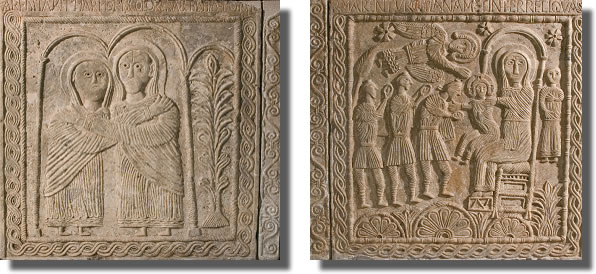
On the back is an opening to allow the viewing of relics, and this is flanked by figures of crosses encrusted with precious gems, while other floral motifs fill the lower section.
The Altar was probably executed sometime around the 5th decade of the VII century or later, possibly in 749, the year in which Ratchis abdicated and retire to the Monastery of Montecassino, and must be considered one of the most singular sculptural works of the Longobard period.
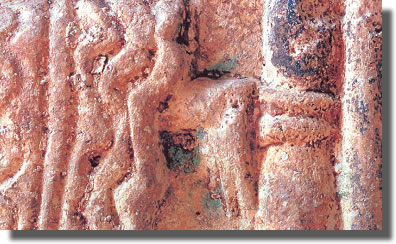
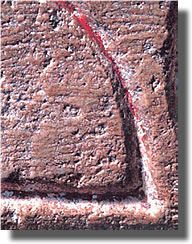
Traces of finishing in light blue and red
The Altar’s appearance is that of a precious reliquary, created by the goldsmith’s traditional skills cherished by Longobards. The work is remarkable because of the peculiar way in which the figures are shown, rendered dynamically and enhanced with great chromatic effect thanks to the thick lines which cover the figures’ drapery. recent research has confirmed that the work was further enriched by precious stones placed in small holes present in the floral elements, the crosses, the cherubim’s wings, and probably also in the eyes of some of the characters. The whole work was characterized by strong colouring which meant the altar seemed more like a precious jewel case than a marble liturgical object.
Both the Tegurium of Callixtus and the Altar of Ratchis are preserved, together with other early medieval sculptural elements, in close proximity to their original location, in a room focusing on the early medieval
period, in the Museum called “Christian and Duomo’s Treasure Museum”.
The Museum holds many artefacts which illustrate the Christian history of Cividale and of its ecclesiastical institutions, as well as numerous others which exemplify the jewellers’ and goldsmiths’ capacity during the later years of Longobard and Carolingian domination.






